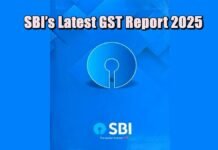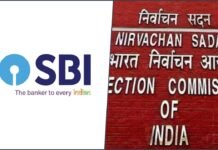
New Delhi: State Bank of India (SBI), the country’s largest lender, has increased its lending rates by up to 0.15 percent (15 basis points) from today i.e. 15 December 2023. The move will make loans from SBI more expensive for borrowers.
What is MCLR and how does it affect loan rates?
MCLR or Marginal Cost of Funds Lending Rate is the minimum interest rate at which a bank gives you a loan. It is linked to the cost of funds, which includes the interest rate that the bank pays on its deposits and borrowings, and other factors such as cash reserve ratio (CRR), statutory liquidity ratio (SLR), and operating costs.
MCLR is revised every month by banks based on the changes in the cost of funds. The loan rates are reset periodically, usually every year, based on the prevailing MCLR at that time. Therefore, if the MCLR goes up, the loan rates also go up, and vice versa.
What are the new MCLR rates of SBI?
SBI has increased its MCLR for various tenures by 10 to 15 basis points. The new MCLR rates are as follows:
| Tenure | MCLR (in %) | Change (in bps) |
|---|---|---|
| Overnight | 8.00 | +15 |
| 1 month | 8.20 | +15 |
| 3 months | 8.20 | +15 |
| 6 months | 8.55 | +10 |
| 1 year | 8.65 | +10 |
| 2 years | 8.75 | +10 |
| 3 years | 8.85 | +10 |
The MCLR for one year is the most important, as it is used as the benchmark for most retail loans, such as home, auto, and personal loans.
What are the other changes in lending rates by SBI?
Apart from MCLR, SBI has also increased its base rate and benchmark prime lending rate (BPLR), which are the older methods of calculating lending rates. The base rate has been increased by 15 basis points from 10.10 percent to 10.25 percent per annum. The BPLR has been increased by 25 basis points from 14.85 percent to 15 percent per annum.
The base rate and BPLR are applicable to the existing borrowers who have not switched to the MCLR regime. They can also opt to migrate to the MCLR system by paying a nominal fee.
Why did SBI increase its lending rates?
The increase in lending rates by SBI is in line with the rising interest rate scenario in the economy. The Reserve Bank of India (RBI) has hiked its key policy rates twice this year, by 25 basis points each, in June and August, to curb inflationary pressures. The RBI has also tightened the liquidity conditions in the banking system by reducing the amount of excess cash that banks can park with it.

These factors have increased the cost of funds for banks, which they have passed on to the borrowers by raising their lending rates. Other banks are also expected to follow suit and hike their MCLR and other lending rates in the coming days.





















































